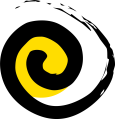Frequently Asked Questions
What makes Toyohari different from other styles of acupuncture?
Acupuncture has evolved and developed in many different historical and cultural contexts since it originated in ancient China. There are many different styles of acupuncture used today. The most common and widely known is TCM (Traditional Chinese Medicine).
Toyohari acupuncture, whilst based on similar fundamental principles, is experienced in quite a different way by the patient. It is a gentle yet dynamic treatment using very fine needles and specialised needle techniques many of which are non-insertive. This ability to influence the flow of the energy (or Qi) using such subtle techniques is specifically characteristic to Toyohari. This system was developed in Japan by blind practitioners, as a style of Meridian Therapy acupuncture. For the past four hundred years, visually-impaired practitioners have played a major part in the more recent development of acupuncture in Japan. Because of this, there is a strong emphasis on palpation and feeling the quality of the energy (or Qi) that flows through the meridian system as well as a continuing refinement of extremely delicate techniques. The Toyohari Association in Japan ensures that Toyohari acupuncture is a living tradition where diagnostic and treatment techniques are continuously being re-examined and evaluated in the context of the twenty-first century and its rapidly changing life-style.
What is involved in a Toyohari treatment?
Treatment is a very relaxing experience. Traditional diagnosis involves taking the details of your case, including your past and present medical history. Once on the treatment table, the practitioner will gently palpate the meridians and your abdomen and feel the pulse at the wrist. Treatment involves addressing the root energetic imbalance in order to strengthen the whole body. Just as a tree depends on its roots, once a strong balance is achieved, the branches begin to grow and flourish. Branch treatment addresses the specific presenting conditions for which you have sought treatment. Warming herbs (moxibustion), cupping and other techniques unique to Toyohari are used. You may experience a sensation of warmth and tingling as the points are stimulated. Often people feel a sense of calm and well-being during the treatment itself and immediately afterwards.
How many treatments will I need & how often do I need to come?
Treatment is usually weekly to begin with, although for very acute conditions it may be helpful to come more than once a week. As your condition improves, the sessions are spaced out. Some patients come monthly or once every 6-8 weeks for a health top up or for maintenance.
What conditions can be treated?
Similar to other styles of acupuncture, Toyohari can be used to help strengthen a person’s natural healing ability, to speed up recovery from disease and as a preventative measure to help to protect one’s health.
Who can benefit from Toyohari acupuncture?
Due to the delicate techniques used, this style of acupuncture is not only suitable for adults, but also for babies, children of all ages and the elderly. As an integral part of the treatment, emphasis is placed on the appropriate dosage of treatment. The use of specialist silver acupuncture tools enables stimulation to be carried out using gentle stroking, rubbing and tapping techniques and the use of contact non-insertive needling.
Is it safe?
Widespread research has demonstrated that all acupuncture, when carried out by appropriately trained practitioners, is an extremely safe form of therapy. All registered Toyohari practitioners are trained both to undergraduate and more advanced levels of training and are experienced practitioners.
Who are Toyohari practitioners?
The study of Toyohari is at a post-graduate level. This means that your practitioner has already qualified as an acupuncturist either in the UK or abroad before training in Toyohari. To attain certification in Toyohari, the practitioner must complete a comprehensive one year minimum training programme through the European Board of the Toyohari Association. To maintain certification, practitioners are committed to attending regular study groups and international seminars in the UK, Europe and Japan.

